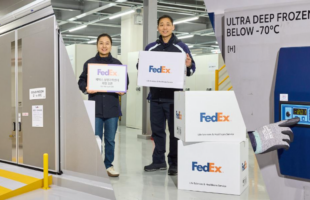The continued dynamic growth of ecommerce fulfillment has UPS and FedEx preparing for one of the largest holiday season forecasts to date. Retailers and carriers alike are working together on ways to incentivize their consumers to spend more money, but they must also be ready to meet their shipping deadlines when consumer’s make their online purchases. The 2013 holiday shipping season experienced a number of delays, missed deliveries and service disruptions due to the increase of ecommerce orders, inaccurate forecasts, and unfortunate weather throughout the country. UPS and FedEx are determined to avoid the shipping disaster of 2013, and have taken the appropriate steps to make sure 2014 goes smoothly.
UPS and FedEx have taken similar approaches in their first plan of attack, which is investing millions of dollars on improving their infrastructure, as well as hiring a much larger number of seasonal workers. The money being spent on infrastructure will enable the carriers to improve shipment processing and tracking, and expediting time sensitive shipments in all facilities, and has also contributed to the increase of distribution centers throughout the country. UPS has additionally added a series of new mobile distribution centers (MDCs) to increase flexibility in the company’s network. The MDCs move by rail and can be set in parking lots to serve as a temporary home for almost 100 additional trucks. The increase in seasonal workers will result in round the clock shifts so the supply chain is in constant motion. Both companies have confirmed that approximately 10% of seasonal workers are hired on for permanent positions, allowing them to begin holiday planning for the future years.
Pushing ecommerce retailers to provide as accurate shipping forecasts as possible will play a critical role in this year’s peak season. Both companies set extremely early deadlines for their retailer’s forecasts, that way they can compare and contrast their forecast with what the retailers are preparing for. So far, it is reported that all of these retailers have submitted forecasts that are much higher than last year. It is then the carrier’s responsibility to forecast for their clients and compare any differences in the numbers. Once both parties come to a consensus, they can work together on order cut-off times, alternate hub locations, and strategically running marketing campaigns at times outside of the standard peak season.
Evidence has supported the fact that many consumers wait until those last-minute deals begin to make some of their largest purchases. Because of this, it has been a popular trend of many retailers to offer free shipping or more savings for those consumers willing to spend more right before Christmas. In 2013, this created a massive buildup for both carriers’ supply chains and resulted in millions of packages arriving days after their deadline, days after Christmas. If retailers can offer a variety of solutions and incentives on orders placed weeks prior to December 25th, UPS and FedEx will have more time to work with any unforeseen issues that may arise.
There are many opportunities for the retailers and carriers to partner up and develop creative solutions to alleviate all of the pain and stress from the 2013 holiday shipping season. The retailers need to be more diligent in their sales forecasting in order to help their partners be more successful. Implementing campaigns that offer the same, if not better deals, for consumers to make purchases earlier in the holiday season as well as being more realistic about estimated shipping times. These are all strategies that both sides can be proactive about in an attempt to have as much control over the supply chain process as possible. Harsh winter weather may strike again, but all involved are very optimistic about the upcoming season and the plan in place to collaborate as partners and alleviate all unnecessary stress that comes with delivering packages on time.
(This holiday shipping update is brought to you by TAGG Logistics.)









